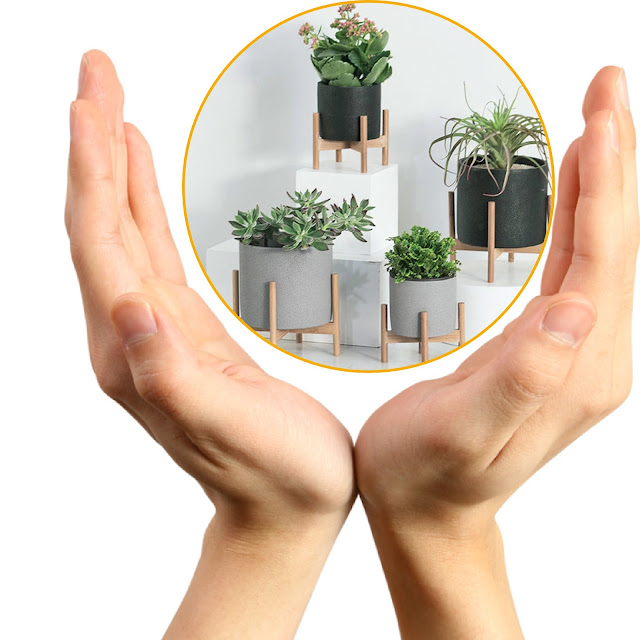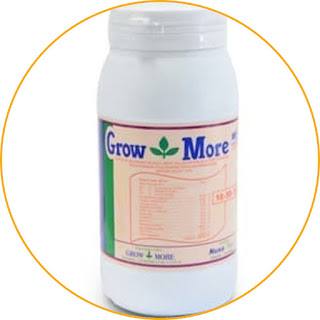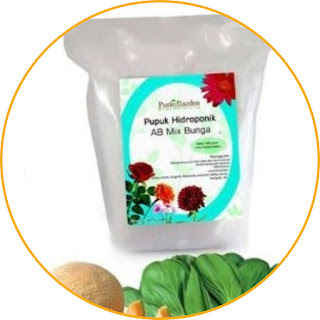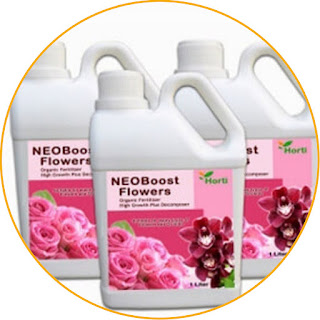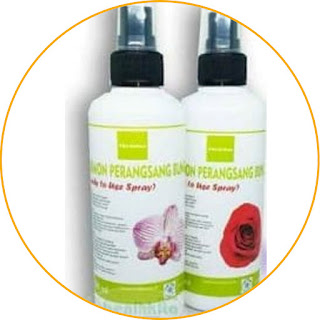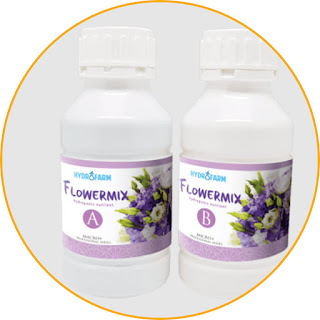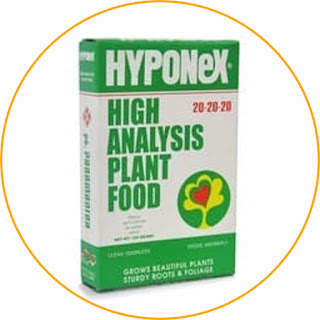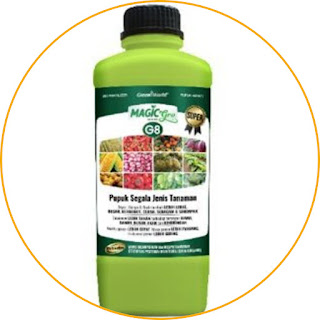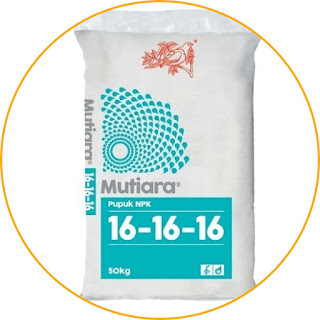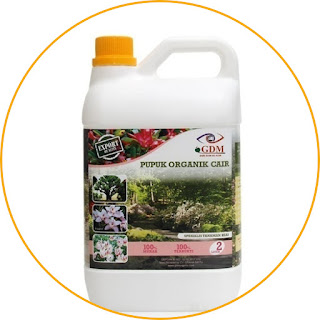What are the 3 main components of flower fertilizers?
In general, fertilizers contain three main components. This content is also found in flower fertilizers. The three components are nitrogen (N), phosphate (P) and potassium (K). Nitrogen functions to encourage the growth of leaves and stems, phosphate for flower and fruit growth, and potassium for roots. The content and effects produced by fertilizers are determined by the ratio of the three main components plus various other substances.
Iron and magnesium are sometimes added to fertilizer. However, basically plant can grow with the three main components plus water, sunlight and air.
In addition, there are also energizing agents which function only as nutritional supplements or vitamins for plant. This is because the product only contains a small amount of NPK so that it does not meet the requirements required by the government. Energizing agents are often confused with fertilizers. So, do your research carefully before buying.
How to choose a flower fertilizer?
The following will discuss in detail the important points that need to be considered in choosing flower fertilizers. Choose a fertilizer that suits your current flowers conditions.
Choose the NPK ratio according to the interest conditions
Before applying fertilizer, you need to observe the condition of the plant first. Notice if the leaves fall off easily, the flowers don't bloom, or if the roots are weak.
If the leaf condition is weak, use a fertilizer with the same NPK ratio. What if the problem is with a flower that is not blooming or is not healthy? Choose a fertilizer that contains the ingredients your flowers need, for example, it contains a lot of phosphate. Make sure you carefully check the ratio of the substances listed on the fertilizer package and choose as needed.
What are the advantages between organic and inorganic fertilizers?
Fertilizers are divided into two, namely organic fertilizers and inorganic fertilizers (chemical fertilizers). In order for flowers to grow well, use both types of fertilizers appropriately.
Organic fertilizers, effective for improving soil quality
The term organic in organic fertilizer means that it contains carbon. In short, organic fertilizers are made from materials derived from animals, plants, or natural materials. This fertilizer is important in the cultivation of organic vegetables and is effective for improving soil quality and flower growth. However, organic fertilizers usually have a strong odor.
Inorganic fertilizers, ideal for potted plants
Different from organic fertilizers, inorganic fertilizers contain synthetic chemical substances. One of the characteristics and advantages of this type of fertilizer is that it is odorless. This makes inorganic fertilizers preferable for the cultivation of potted plants at home.
In inorganic fertilizers, the amount of the substance contained is clearly written. It will also make it easier for you to give the substance you need in the right amount. However, don't fertilize excessively as too much fertilizer can damage the plant's roots as well as the soil. This occurs because the nutrient content is too high or it is called fertilizer burning. So, be careful not to over-fertilize.
Select the type of fertilizer performance according to the rate of flower growth
In general, fertilizers can be divided into three types based on how they work. The three types are quick-release fertilizer, slow-release fertilizer, and delayed-release fertilizer. Choose the type according to the growing period and bloom time of each flower.
Quick-release fertilizer: Quickly adds nutrients, especially when the flowers are in bloom
Liquid fertilizers and chemical fertilizers that are easy to dissolve in water are classified as quick-release fertilizers. This fertilizer is generally used as an additional fertilizer to add nutrients to plants, especially during the blooming period. However, given the short duration of its effect, this fertilizer needs to be given periodically as needed. This type of fertilizer is also recommended for use in unhealthy potted plants.
Delayed-release fertilizer: Long-lasting effects for various growth phases
The type of fertilizer that is mostly used for gardening needs is delayed-release fertilizer. This fertilizer does not work as fast as the quick-release fertilizer. However, this type provides adequate nutrition at the start of use and can last for a long time.
This type of fertilizer is recommended for potted plants, either as a main fertilizer or as an additional fertilizer. You can also put fertilizer on top of the soil so that the nutrients will reach the plants each time you water. Because the delayed-release fertilizer can be used in a variety of situations and is easy to use, this type of fertilizer is very popular.
Slow-release fertilizer: Gives effect slowly
Slow-release fertilizer works for a period of one to several months. This fertilizer is used as a basic fertilizer for nurseries and replanting. Most of the organic fertilizers, such as food waste, bones and rice husks are included in the slow-release fertilizer category. This fertilizer is suitable for use on plants or flowers in the yard for long-term effects.
Choose the form of fertilizer according to the type and condition of the flower
Fertilizer has two forms, namely liquid and solid. Different forms of fertilizer have different uses. The fertilizer used will depend on the type and condition of the flower. Therefore, learn how to grow flowers properly before applying fertilizer.
Liquid fertilizer: Used for unhealthy potted plants
Most of the liquid fertilizer is included in the quick-release fertilizer category. For unhealthy potted plants, provide liquid fertilizer because it can work quickly to improve plant conditions. However, the effect of fertilizers that do not last long makes you need to fertilize them often even though their performance is classified as effective.
On the market there are quite a lot of liquid fertilizers that must be diluted with water before use. Therefore, make sure you have read the usage instructions written on the packaging before using, yes!
Solid fertilizers: For seeding and replanting
Solid fertilizer gives effect slowly and is included in slow-release fertilizer or delayed-release fertilizer. For best results, place the fertilizer near the roots of the plant so that the nutrients can be absorbed slowly each time you water it. Another option, mix the fertilizer with the soil when doing seedlings or replanting. Solid fertilizers are also suitable for plants planted directly in the ground without the use of pots or other containers.
Give a special fertilizer for roses and orchids
For high-priced flower varieties, such as roses and orchids, you can provide special fertilizers. If you have a special fertilizer for the flowers, it is more advisable to use this fertilizer than regular fertilizers.
What are the best fertilizer recommendations for flowers?
Here, plengdut.com will introduce some of the best flower fertilizers that you can choose according to your needs. Find out more and find the right product.
For fans of ornamental plants, enjoying flowers that bloom beautifully is certainly a pleasure, right? The use of appropriate fertilizers will certainly improve soil quality and plant health. For that, you also need to know the condition of the flower plants first.
This time we have discussed how to choose fertilizers for flowers and provide recommendations for selected products. Hopefully you will soon find suitable fertilizers for the flowers you are planting.

